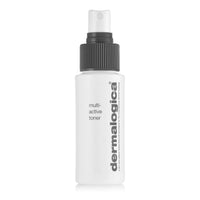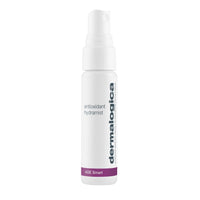Written By: Janu Yasotharan
'Acne Vulgaris' is the most commonly known form of acne and refers to pimples that have come about due to hair follicles that have become clogged with excess sebum, bacteria, and dead skin cells—otherwise known as clogged pores. Typically falling into two categories, acne is either non-inflammatory like blackheads and whiteheads, or inflammatory acne, like papules, pustules, nodules, and cysts. Though the possible reasons why someone may be dealing with acne can vary, some general causes are genetics, hormone imbalances, oil production levels, the presence of bacteria, medication, environment, stress levels and many other internal and external factors.
Considering how many 'types' of pimples exist, acne is a broad term. When looking for a skin care routine to heal and strengthen your skin, it's essential to keep your skin type and skin goals in mind. The easiest way to find a personalized routine that works for you is by booking a free consultation with one of our Professional Skin Therapists. In the meantime, we've put together a comprehensive list of the different types of acne and some Dermalogica lines you can explore with your Skin Therapist during your consultation.
Blackheads
Also known as open comedones, blackheads are categorized by their black appearance where the pimple comes to a head. Usually caused by debris and oil build-up that clogs pores, their appearance isn't from dirt or infection, but oxidized sebum. Explore the double cleansing method with our PreCleanse Oil or PreCleanse Balm to help coax out your blackheads between your facial treatments.
Whiteheads
Like blackheads, whiteheads are also clogged follicles, but they are covered with a thin layer of skin, resulting in a white bump or spot appearance. As tempting as it is to pick at whiteheads, try to avoid at-home extractions between facials and explore products formulated with salicylic acid like our Clear Start line, our Age Bright Spot Fader, our Clearing Skin Wash, or even our Daily Microfoliant.
Papules, Pustules, Nodules, and Cysts
Papules are often sensitive and painful inflamed lesions that may come hand-in-hand with some redness. Pustules are also inflamed lesions but are pus-filled and appear more white or yellow on the skin's surface. On the other hand, nodules are lesions that develop under the skin and are hard to the touch but don't always contain pus. And finally, cysts are more severe inflamed lesions filled with pus. Though they are all different, the common denominator is that they need to be treated with care and almost always require professional medical treatment.
It's best to avoid aggressive scrubs, peels, and treatments when dealing with inflammation sensitivity. A gentler approach will, more often than not, bring out your best skin. Explore our UltraCalming line as an option to use alongside treatment solutions provided by your dermatologist to calm, soothe, hydrate and help defend sensitive skin against future flare-ups. Formulated to help manage the internal and external influences that trigger sensitization and fortify the skin's protective barrier for healthier skin, our UltraCalming line is ideal for inflammatory acne.



















